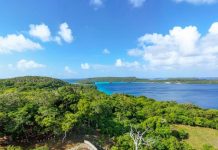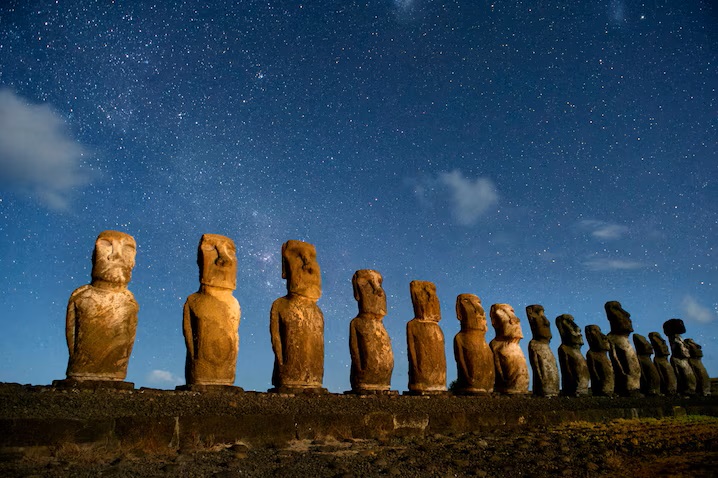The Pacific islanders who carved the haunting stone statues of Rapa Nui appear to have avoided “ecological suicide”, according to genomics research that adds to evidence against a popular theory about their fate.
DNA analysis of human remains suggests the population of the remote volcanic outcrop also known as Easter Island kept growing until the mid-19th century rather than succumbing to environmental pressures during the preceding centuries.
The findings further undermine the “ecocide” theory popularised by US biophysicist and geographer Jared Diamond, which has become emblematic of the self-harming impact of human environmental destruction.
“The ecocide idea is still quite ingrained, even in pop culture,” said José Víctor Moreno Mayar, author of the research and assistant professor at Copenhagen university. “We hope our genomic evidence combines with existing archaeological and anthropological evidence to get the story right.”
Moreno Mayar and colleagues studied the bones and teeth held at France’s Musée de l’Homme of 15 ancient Rapa Nui residents, who lived on the island between about 1670 and 1935. The analysis was conducted with the approval of representatives of the island community whose goal is to repatriate the remains, the researchers said in a paper published in Nature on Wednesday.
The scientists used the genetic data to work out patterns of shared ancestry and infer past population sizes. In general, the smaller the historical population, the greater the shared ancestry in their descendants.
The researchers’ modelling suggested the island’s population hit its lowest level many centuries before the Rapanui studied were born. This did not support the idea of a 17th-century population collapse that is central to the ecocide theory, they added.
The island’s population appeared instead to have increased to about 3,000 until the 1860s, when it plunged as a result of Peruvian slave raids and a severe outbreak of smallpox, the researchers said. It was reported to be as low as 110 by 1877 but was projected to have reached about 7,750 by 2017, according to official figures from Chile, which annexed the island in 1888.
“It is well documented that humans had an impact on the island’s environment and our data has no bearing on that,” Moreno Mayar said. “However, the data also suggests the Rapanui were capable of adapting to the environmental changes they were facing.”
The Rapa Nui ecocide hypothesis has become as totemic as the island’s hundreds of moai, giant megalithic head and torso statues thought to represent ancestors. Diamond’s 2005 book Collapse suggests that the islanders’ focus on constructing and transporting the moai contributed to them denuding their home of palms and other flora.
Rapa Nui is “the clearest example of a society that destroyed itself by overexploiting its own resources”, Diamond wrote.
Diamond, who has rebutted previous criticism by other scientists, defended his theory against the genomic work. He questioned the validity of drawing conclusions about genetic history and past population sizes using modelling that the authors described as “challenging” in some respects.
The genome research offered further insights into another scientific debate, about when mixing between the original Polynesian settlers of Rapa Nui and people of the continental Americas more than 3,500km away first occurred. The DNA analysis suggested first contact happened before 1430, showing the two groups had contact before Europeans travelled to either Rapa Nui or the Americas.
Other scientists said the genomic research supported previous evidence suggesting the Rapanui people were able to successfully adapt to survive. This included a paper published in June that used satellite imagery and artificial intelligence to map ancient rock gardens used to grow sweet potatoes and other crops.
The genetic data suggested the theory of ecologically triggered population collapse was “always a fantasy”, according to a commentary also published in Nature by Stephan Schiffels and Kathrin Nägele of Germany’s Max Planck Institute.
“Perhaps this study will serve as the final nail in the coffin for this idea, instead providing a hopeful story about humans’ resilience and capacity to learn to manage resources sustainably in the face of environmental changes,” they wrote.














